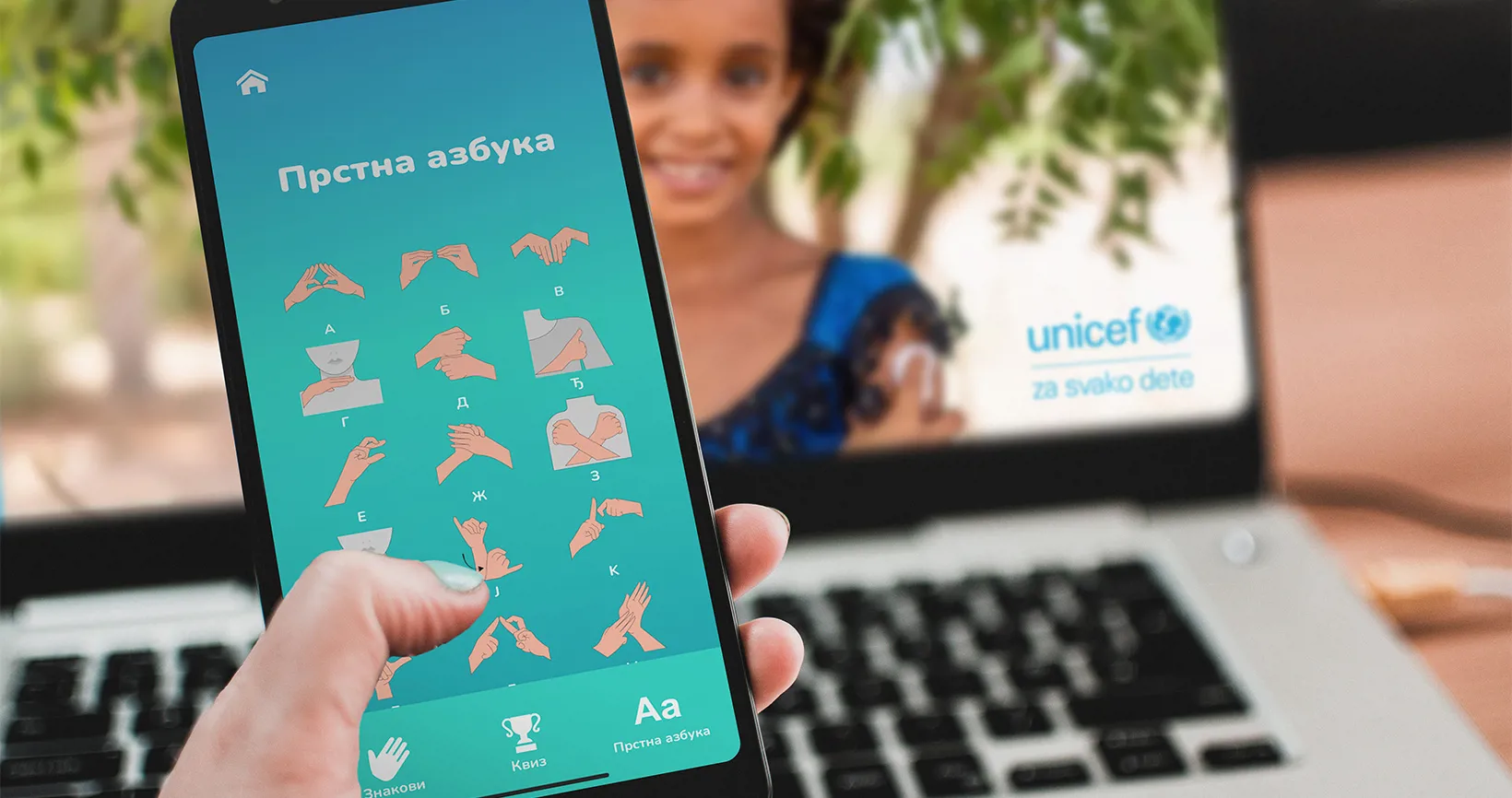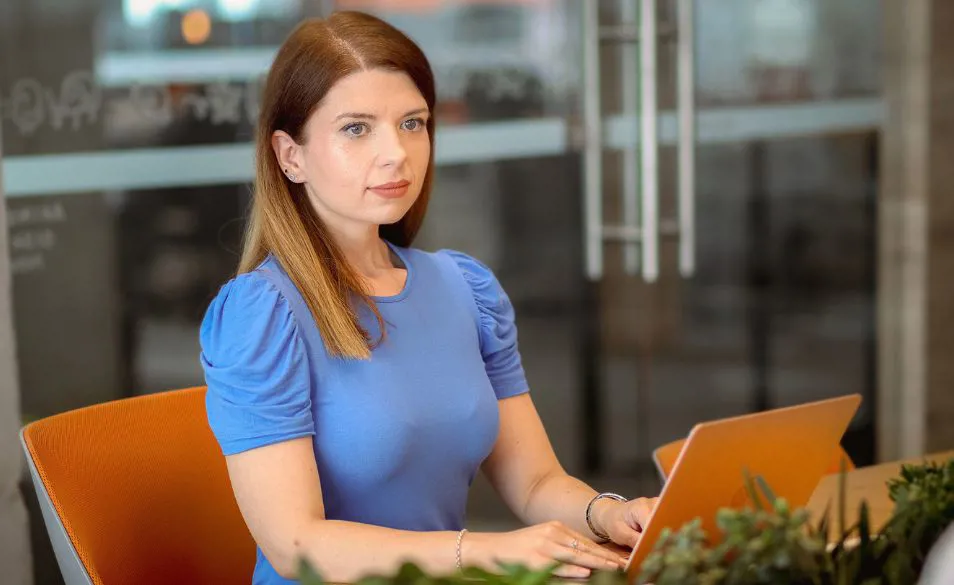Co-creating the first Serbian Sign Language app for children and beginners with UNICEF
In collaboration with UNICEF, the Belgrade Deaf Organization, and the Deaf and Hard of Hearing Association of Serbia, we created the first Serbian Sign Language app for kids and beginners.

The challenge: Removing communication barriers for hearing-impaired kids
The COVID-19 pandemic has posed unique challenges for the deaf and hard-of-hearing communities. One of them is communication barriers caused by the widespread use of face masks. This has posed a series of issues for individuals who rely on lip–reading or facial expressions for communication.
Consequently, notable efforts have been made to address those challenges. One such example is the latest initiative by UNICEF that teamed with the Belgrade Deaf Organization, and the Deaf and Hard of Hearing Association of Serbia. They recognized the need to create a Serbian language learning app for children and beginners.
The client’s primary goal was to build a free-of-charge app that would enable deaf and hard-of-hearing children, as well as their families, teachers, and communities, to learn and use Serbian Sign Language. Their primary goal was to break down communication barriers, encourage social inclusion, and eliminate social stigma.
Another problem that the client wanted to address was the insufficiency of Serbian sign language interpreters. Namely, in Serbia, there are no official sign language training programs, courses, or school curricula. Consequently, interpreters typically have personal connections with the deaf and adopt the language through everyday communication.
An increasing number of children, young people, and adults with hearing disabilities rely on high-tech solutions. The availability of such apps on mobile phones allows the entire family and peer community to learn the Serbian Sign language effortlessly. Even though the app is designed for children with hearing impairment, it can also be used by all individuals who have hearing problems or want to learn Serbian Sign Language to communicate with their loved ones.
The team: A four-person team as the client’s tech partner
None of the organizations involved in the project had an in-house team of developers. They were seeking a reliable software development partner who would take full ownership of the project and help them build the desired solution from the ground up.
With our deep technical expertise and capabilities to deliver a scalable, end-to-end solution, Vega IT had everything they were looking for.
To meet the client’s needs, we assembled a team of four people, including a front-end developer, a back-end developer, a quality assurance engineer, and a product owner.
The solution: A future-proof sign language app, built from the ground up
Given the unique nature of the project, as well as its complexity, it was crucial for us to understand the client’s goals for the future.
Full ownership of the project
We had complete autonomy over the project scope definition, architecture definition, development, product release, quality assurance, and delivery, as well as product design delivery.
From the technical viewpoint, we proposed the software architecture, the technologies that would be used, and the project scope.
One app – for both Android and iOS
We had one code (React Native) for both platforms. That way, we reduced the overall development expenses and speeded up the delivery time.
Scalability as a top priority
We listened to their ideas and, based on them, focused on building a scalable, future-proof digital solution for them. Having understood their ideas, the resources available, as well as the full potential of the project, we aimed to create a digital product that is easy to grow, manage, and maintain.
Additionally, we developed a back office in Umbraco, for software admins. In just a few clicks, they can add new categories and terms. In other words, they could grow and expand the application on their own, without the further involvement of software engineers. The content added is automatically visible on both applications.
Gamification to increase learner engagement
The entire application was gamified to make it easier for young learners to sign. Each word in the application has an illustration and a video of kids showing how to sign. To keep users engaged, we implemented a quiz to test their knowledge of sign language.
The result: An award-winning app, with over 1000 downloads
We built the application from the ground up, making sure it is highly intuitive, engaging, and easy to use for those who matter the most – hearing-impaired kids and beginners wanting to learn sign language.
The application was launched and presented to the public on the anniversary of the adoption of Serbian Sign Language as the mother tongue of the deaf.
For UNICEF, collaborating with Vega IT as a technical partner was a significant experience. It proves that children's educational opportunities and social inclusion can be higher and more quality with innovative technological solutions and expertise. The cooperation with UNICEF, the Belgrade Deaf Organization, and the Deaf and Hard of Hearing Association of Serbia is an excellent example of how cross-sector collaboration contributes to the realization of rights and equality in Serbia.
With over 1000 downloads, the application has already gained traction. It aims to promote sign language learning in all educational institutions, encouraging them to learn the basics of sign language.
As the app co-creators, Vega IT even received a national award for this digital solution, called The Special Award for the Best Socially Responsible Application.
The full tech stack
The server side:
- .NET
- Umbraco
The database:
- MS SQL Server
Front-end development:
- React Native
- Redux
Testing:
- Test Flight (for iOS apps)
Hosting images and videos:
- Publition platform


